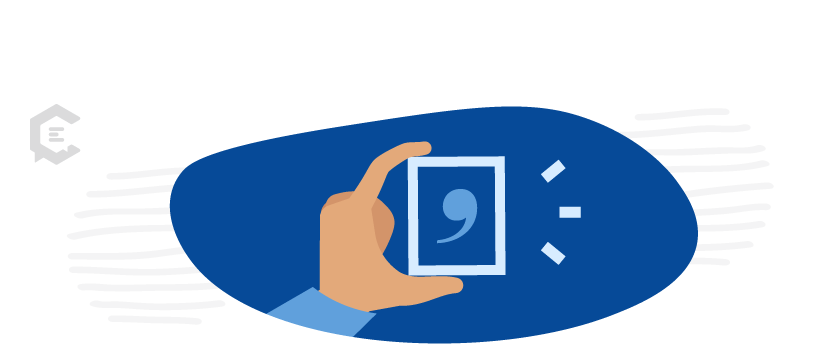We’ve all heard the “let’s eat grandma” joke, and for good reason. The comma is one of the most discussed, used, and misused punctuation marks in English grammar.
You might find yourself writing shorter sentences because you’re not sure where that pesky mark needs to go. On the other hand, maybe you try to fit as many commas as you can into your writing and passionately debate the Oxford comma when prompted (or not prompted).
No matter where you stand on comma usage, it never hurts to have a refresher course, right? Learn how to use commas properly below.

How to Use Commas
Maybe you’ve heard this classic grammar joke:
What’s the difference between a cat and a comma?
A cat has claws at the end of its paws. A comma’s a pause at the end of a clause.
This is actually a good way to remember a comma’s function. A period marks the end of a sentence, while a comma indicates a pause somewhere in the middle. In general, commas are used to provide clarity in writing, which will improve the outcome of your marketing efforts. They can separate words, phrases, or clauses.
Comma splices
A comma can be used to separate two independent clauses, but only if it is used with a coordinating conjunction.
Example: Yesterday I went to the beach, but it rained the whole time I was there.
This could be split into two standalone sentences, or the two clauses could be separated by a semicolon. A comma alone is not strong enough to separate two independent clauses. If you forget the coordinating conjunction, this is called a “comma splice.”
Separating with commas
Commas can also be used to separate a word or phrase from the rest of a sentence. This could be an introductory phrase, an appositive phrase, a question, or a direct address.
An introductory phrase starts a sentence.
Example: Before school starts, make sure that your homework is finished.
An appositive provides additional information about the noun in a sentence. If the appositive information could be removed without changing the sentence’s meaning, it should be set apart with commas. If the information is essential to the sentence, however, it does not require them.
Example: My mom, Elizabeth, is a phenomenal pianist.
Example: The movie Princess Diaries is one of the best movies of all time.
If you address someone within the course of a sentence, you can offset that person’s name with a comma.
Example: Mom, I can’t find my favorite shoes!
If you include a question tag at the end of a sentence, that can also be offset with a comma.
Example: You haven’t seen my shoes, have you?
Serial commas
Perhaps the most hotly debated punctuation mark is the serial comma, also known as the Oxford comma. This is the last punctuation in a list of things. It comes before the conjunction.
Example: I bought apples, bananas, and a watermelon at the farmer’s market.
Ultimately, knowing how to use commas properly allows you to provide clarification to your readers. Not every comma rule is hard and fast, and many are open to personal preference or interpretation. However, the above rules are a good place to start!
Need help writing grammatically correct and undeniably engaging content? Talk to a content specialist at ClearVoice about your needs today.




